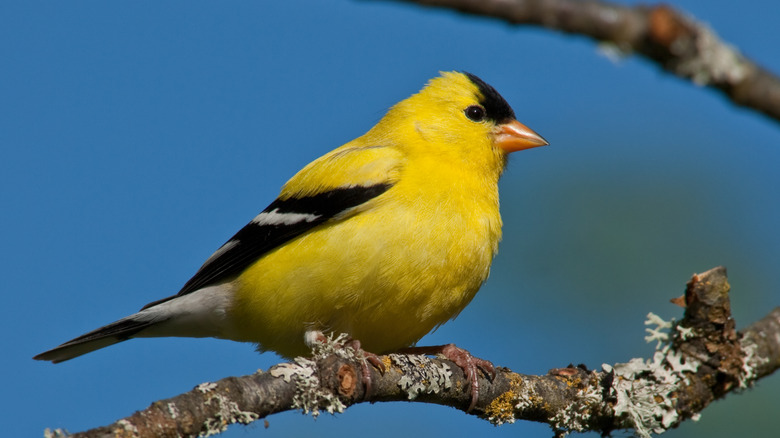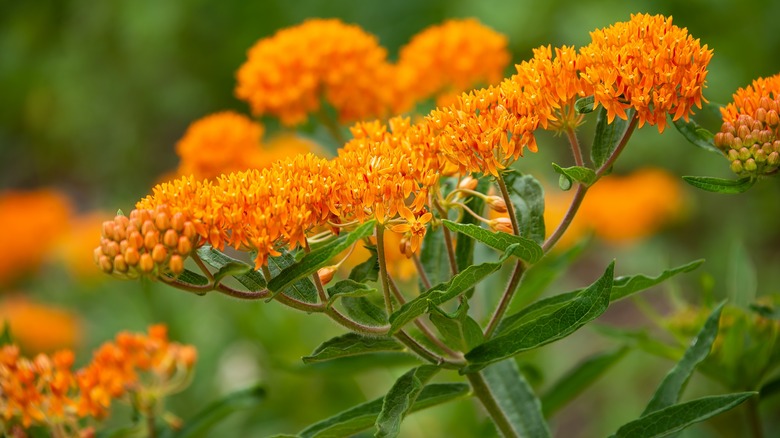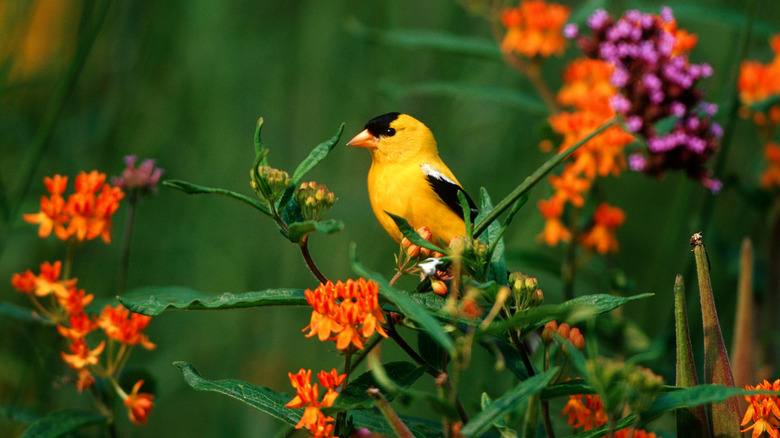Plant This Colorful Flower And Watch American Goldfinches Nest In Your Yard
American goldfinches are a delight to watch and listen to. The birds aren't just beautiful. They display a distinctive and undulating flight, and males boast almost impossibly bright yellow feathers. But, they're also social. Backyard bird watchers hoping to attract these feathered friends to their yards are in luck. Goldfinches often use fiber from milkweed in their nests. This means planting milkweed in your yard won't just attract butterflies — it could also encourage goldfinches to nest nearby.
American goldfinches (Carduelis tristis) can be found throughout most of North America and often visit suburban backyards. Goldfinches primarily eat seeds, so if you have a bird feeder or grow decorative grasses, thistles, or other plants with seeds, you may already be attracting finches to your garden. Adding milkweed to your garden increases the chance that goldfinches won't just stop in to eat but will nest nearby as well.
Growing milkweed
There are many varieties of milkweed (Asclepias spp.) that are native to the United States. These include common milkweed (Asclepias syriaca) with its pink and white flowers, swamp milkweed (Asclepias incarnata), which has purple flowers, and butterfly milkweed (Asclepias tuberosa), which has bright orange flowers. All three plants are perennial in USDA zones 3 through 9. Swamp milkweed is ideal for growing in wet areas like rain gardens, while common milkweed and butterfly milkweed thrive in drier locations and can be quite drought tolerant once they are established.
While both swamp and butterfly milkweed can handle either full or part sun, common milkweed needs full sun to thrive. There are other types of milkweed available as well, including the multicolored tropical milkweed (Asclepias curassavica), which hails from South America. As beautiful as this milkweed is, it isn't generally recommended for growers in the U.S. as native animals, especially monarch butterflies, benefit more from native milkweed species.
Using milkweed in your garden
Many of goldfinches' favorite foods make perfect companion plants to milkweed. The beautiful birds love coneflowers for their seeds, and these plants are right at home in dry and sunny conditions, just like common and butterfly milkweed. Coneflowers come in a variety of sizes, from the giant coneflower, which can grow up to 8 feet tall, to dwarf coneflower varieties which only grow to about 20 inches. Butterfly milkweed, which grows up to 3 feet, can fit in the middle of this design. This garden won't just benefit goldfinches. It will also help bring more pollinators to your yard.
Because swamp milkweed prefers wetter conditions, it makes a great companion to cup plants (Silphium perfoliatum). Cup plants are North American natives which also thrive in rain gardens and other wetter areas. Goldfinches also love cup plant seeds. Because cup plants can reach up to 9 feet tall, they should be planted behind the comparatively smaller swamp milkweed.


